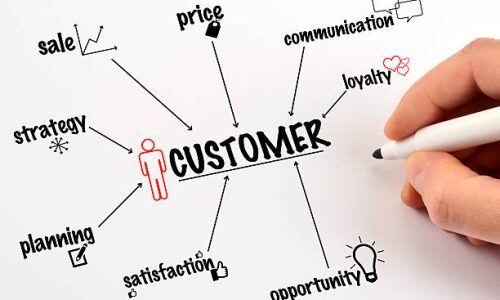Senior marketing executives know that a brand refresh – updating elements like the logo, packaging, and messaging – can reinvigorate afalse
In an era where market dynamics shift rapidly, the agility to monitor and adapt to consumer trends is a critical asset for any business. This need for speed and specificity has given rise to the popularity of DIY brand research, allowing companies to gather insights swiftly and react in real-time. While DIY brand research offers the appeal of control and potentially lower costs, the complexities and nuances of thorough market analysis often necessitate a depth of expertise and resources that can stretch beyond the capabilities of many internal teams.
In this guide, we will explore the multifaceted landscape of DIY brand research, outlining the tools and methodologies that can empower companies to conduct their research effectively. However, as we delve into various data collection methods and the interpretation of results, we will also discuss the significant challenges and common pitfalls that businesses may encounter along the way. Additionally, we will highlight the crucial role that professional research agencies can play in complementing and enhancing DIY efforts, ensuring that businesses can achieve a comprehensive understanding of market trends and consumer behaviour. By understanding both the strengths and limitations of DIY brand research, companies will be better positioned to make informed decisions about when to leverage internal resources and when to seek the expertise of specialised agencies.

1. UNDERSTANDING DIY BRAND RESEARCH
DIY brand research is a process where businesses undertake the task of gathering and analysing data about their brand, competitors, and market environment independently, without the full-scale involvement of external research agencies. This approach includes activities such as deploying customer surveys, monitoring social media, conducting competitor analysis, and tracking market trends. While DIY research offers direct oversight and potentially quicker access to data, it requires a careful balance of skills, tools, and understanding of research methodologies to be effective.
Key Benefits of Conducting Your Own Research
The most compelling advantage of DIY brand research is the potential for cost savings, as it bypasses the need for external consultants. Additionally, it allows for direct control over the research process, enabling businesses to focus on specific areas of interest with great flexibility and immediacy. This immediacy can be crucial for responding to fast-paced market changes or internal strategic shifts.
Common Reasons Businesses Opt for DIY Solutions
Businesses may gravitate towards DIY solutions for several reasons:
- Cost Efficiency: Particularly for smaller businesses or startups, budget constraints make DIY research a more viable option.
- Speed of Insights: Organisations in highly dynamic sectors require continuous and immediate feedback to stay competitive.
- Customisation Needs: Companies with highly specific or niche market segments often find that customised, in-house research is more aligned with their unique needs.
Despite these advantages, DIY brand research is not without its challenges. The complexity of designing effective research tools, the potential for bias, and the skills required to analyse data properly are significant hurdles. These challenges can often subtly underscore the benefits of partnering with a professional research agency, which can amplify and refine DIY efforts, bringing in-depth expertise and advanced analytical capabilities to ensure that the insights gained are both accurate and actionable. This blend of internal efforts and professional input often results in a more robust understanding of the market and more strategic decision-making.

2. ESSENTIAL TOOLS FOR DIY RESEARCH
Successfully conducting DIY brand research requires a toolkit that encompasses various software solutions and digital platforms. These tools enable businesses to gather, analyse, and interpret data effectively. However, selecting the right tools can be daunting, and utilising them effectively often demands a considerable degree of technical proficiency.
Overview of Tools Needed for Effective DIY Brand Research
For DIY brand research to be fruitful, companies need access to a range of tools that can facilitate everything from data collection to deep analytical insights. The basic toolkit should include:
- Survey Tools: For collecting data directly from customers or prospects.
- Analytics Software: To interpret data and draw meaningful conclusions.
- Social Media Monitoring Tools: Essential for understanding brand sentiment and gathering feedback from social channels.
- Data Visualisation Software: To transform complex data sets into understandable and actionable visuals.
Software Solutions for Data Collection and Analysis
Selecting the right software is critical and can vary significantly depending on the specific needs of the business. For data collection, survey tools that offer customisable question formats and can handle various distribution channels (email, social media, websites) are essential. For analysis, software that can perform basic to advanced statistical analyses allows businesses to uncover trends, patterns, and correlations in the data.
Analytics tools should also include capabilities for real-time data monitoring, which is crucial for brands operating in dynamic markets where consumer behaviors and preferences evolve quickly. Social media monitoring tools must be robust enough to track mentions across various platforms, providing a comprehensive view of public sentiment towards the brand.
Additional Resources Like Online Platforms and Mobile Applications
In addition to the core software tools, several online platforms and mobile applications can enhance the efficiency and scope of DIY research. These platforms often provide access to larger data sets and benchmarking data against industry standards, which can be invaluable for comparative analyses. Mobile applications enable real-time data collection and interaction with consumers, providing a direct line to immediate consumer feedback, especially useful during events or in physical retail environments.
While these tools are powerful, leveraging them effectively requires a deep understanding of both the tools themselves and the data they generate. This complexity often makes a strong case for occasional collaboration with professional research agencies, which can provide the expertise needed to fully harness these technologies and ensure that the insights derived are both reliable and deeply informative.

DATA COLLECTION METHODS
Effective DIY brand research relies on employing a variety of data collection methods that cater to the specific needs and resources of a business. Understanding the strengths and limitations of each method is key to gathering comprehensive and actionable data.
Various Data Collection Methods Suitable for DIY Research
- Surveys and Questionnaires: These are fundamental for DIY research, allowing businesses to gather quantitative and qualitative feedback directly from consumers. Online platforms make it easy to design, distribute, and analyse surveys.
- Interviews and Focus Groups: Conducting interviews or focus groups can provide deeper insights into consumer attitudes and behavior. While more resource-intensive, these methods offer valuable qualitative data.
- Observational Research: Observing consumer interactions with products or services in natural settings provides contextually rich data, though it can be challenging to organise and interpret without bias.
- Ethnographic Studies: Though complex, ethnographic studies involve immersing into the customer’s environment to understand the cultural and social factors influencing their decisions related to a brand.
Tips for Designing Surveys and Collecting Usable Data
Designing effective surveys involves clear, unbiased questioning that is directly relevant to the objectives of the research. Keep surveys concise to respect respondents’ time and increase completion rates. Use a mix of closed and open-ended questions to balance quantitative analysis with qualitative depth. Pilot testing surveys on a small group before full deployment can help identify ambiguities or technical issues.
The Role of Social Media and Web Analytics in DIY Research
Social media platforms are a goldmine for brand research, offering immediate insights into consumer sentiment and brand perception. Monitoring tools can track mentions, hashtags, and engagement metrics, providing real-time feedback and trends. Web analytics give a detailed view of consumer behavior online, tracking how users interact with a brand’s digital presence, including website traffic patterns, click rates, and navigation paths.
Employing these varied data collection methods enables businesses to form a well-rounded understanding of their brand’s position and health. However, the complexity of managing multiple data streams effectively can be daunting, necessitating a nuanced approach or the occasional guidance of a professional research firm to maximise the value of DIY efforts.

INTERPRETING RESULTS
Once data is collected through various DIY research methods, the next critical step is interpreting these results accurately to inform business decisions. Effective analysis hinges on understanding the data’s implications and requires a judicious approach to avoid common pitfalls.
How to Analyse the Data Collected from DIY Research
Analysing data from DIY research starts with data cleaning removing duplicates and correcting inconsistencies. Once the dataset is prepared, sorting the data based on different variables (e.g., demographic information, responses) can help identify patterns or trends. For quantitative data, statistical analysis techniques such as correlation analysis, regression analysis, and hypothesis testing are valuable. These methods help determine the relationships between variables and the significance of the results.
For qualitative data from interviews or open-ended survey responses, content analysis is essential. This involves categorising responses to identify common themes and sentiments, which can provide deeper insights into consumer attitudes and behaviors.
Common Analytical Techniques and Software Recommendations
Several general software tools are available that facilitate the analysis of both quantitative and qualitative data:
- Statistical Analysis Software: There are several options available that offer robust statistical analysis capabilities, ideal for handling large datasets and conducting complex statistical tests.
- Qualitative Data Analysis Software: Tools designed for coding and analysing textual data help streamline the process of identifying themes and patterns from qualitative responses.
- Data Visualisation Tools: Using software that converts data into visual formats (charts, graphs, heat maps) makes it easier to understand complex datasets and communicate findings.
Pitfalls in Data Interpretation and How to Avoid Them
A common pitfall in data interpretation is confirmation bias, where researchers may unknowingly interpret information in a way that confirms their preconceptions. To mitigate this, it’s crucial to approach data analysis with an open mind and consider multiple hypotheses before drawing conclusions. Another challenge is overgeneralisation from a small or non-representative sample. Ensuring that the sample size is adequate and representative of the broader population can help avoid this issue.
Lastly, misinterpreting causation as correlation is a frequent error. Just because two variables change in tandem does not mean one causes the other. Careful consideration of external variables and additional testing can clarify these relationships.
Navigating the intricacies of data analysis requires a solid understanding of both the tools and the underlying principles of research methodology. While DIY research offers flexibility and control, the complexity of data interpretation often underscores the value of occasional support from professional research agencies, which can enhance the reliability and applicability of your findings.

INTEGRATING DIY RESEARCH WITH PROFESSIONAL INSIGHTS
While DIY brand research can provide valuable insights and quick data access, integrating these efforts with professional expertise can elevate the accuracy and depth of your findings. The combination of internal and external research efforts offers a comprehensive approach that can address the complexities of market analysis and consumer behavior more effectively.
The Importance of Balancing DIY Efforts with Expert Guidance
DIY research initiatives are excellent for maintaining ongoing engagement with market trends and consumer feedback. However, professional researchers bring a level of depth, especially in statistical analysis, methodology correctness, and trend prediction, that can be difficult to achieve internally without specialised training. Expert guidance helps validate and supplement DIY findings, ensuring that the conclusions drawn are based on rigorous analysis and are benchmarked against industry standards.
When to Seek Professional Help and How to Blend it with DIY Findings
Professional help becomes crucial when:
- Complex Data Sets: The data collected are too voluminous or complex for standard analysis tools handled in-house.
- Specialised Knowledge Required: The research questions require specialised knowledge or technical expertise beyond the current capability of the in-house team.
- High Stakes Decisions: The outcomes of the research will inform significant business decisions where accuracy is paramount.
Blending DIY findings with professional insights typically involves a collaborative approach where initial data collected through internal efforts is further analysed or augmented by research agencies. This can involve additional layers of qualitative insights or advanced quantitative modeling.
Integrating DIY research with professional insights not only strengthens the validity of your research findings but also provides a more nuanced understanding of complex market dynamics. This holistic approach ensures businesses are well-equipped to make informed strategic decisions.

Wrap up
Throughout this guide, we’ve explored the vibrant world of DIY brand research, highlighting its accessibility and the direct control it offers businesses over their data collection and analysis processes. We’ve discussed the essential tools and methodologies that empower companies to conduct effective research independently, as well as the various data collection methods and analytical techniques that are pivotal in deriving meaningful insights from the gathered data.
While DIY brand research is a powerful tool for businesses, especially those looking to manage costs and increase agility, we’ve also acknowledged the complexities and challenges inherent in the process. Integrating DIY efforts with professional insights has been underscored as a critical strategy for businesses aiming to achieve a comprehensive understanding of their market environments and make decisions with high confidence.
As you embark on or continue your journey in DIY brand research, consider it a continuous learning curve. Embrace each phase of research with a strategic approach, and be open to augmenting your efforts with external expertise when necessary. This balanced approach will not only enhance the quality of your data but also ensure that your research processes evolve and improve over time, keeping you well-equipped to navigate the ever-changing market landscapes.
Let us be your guide
Discover how Brand Health can help you unlock insights to drive your brand's growth!
Related posts
Brand health refers to the overall strength of your brand’s presence and reputation in the market – it encompasses how well your brandfalse
On a rainy Melbourne morning, two cafés open their doors on Collins Street. Both serve a flawless flat white for the same price. Yetfalse
Thursday 8:00 AM, Sydney. The marketing team at a top Australian retailer huddles around the latest brand health dashboard. Eyes widenfalse
You can have the perfect questionnaire. Expertly crafted questions, validated scales, flawless survey logic. None of it matters if
$6.8 billion. That's what Australians spent over the Black Friday weekend, according to the Australian Retailers Association and Roy
In January 2023, a major Australian retailer made a decision that would cost them 18 months of strategic clarity and nearly destroy
Revenue tells you what happened. These three questions tell you what's about to happen.
.png%3Fwidth=390%26height=50%26name=Layer_1%20(1).png)








